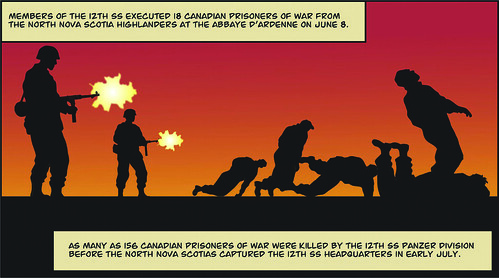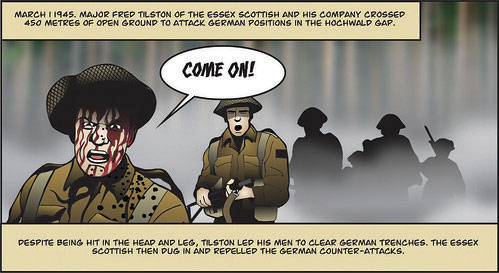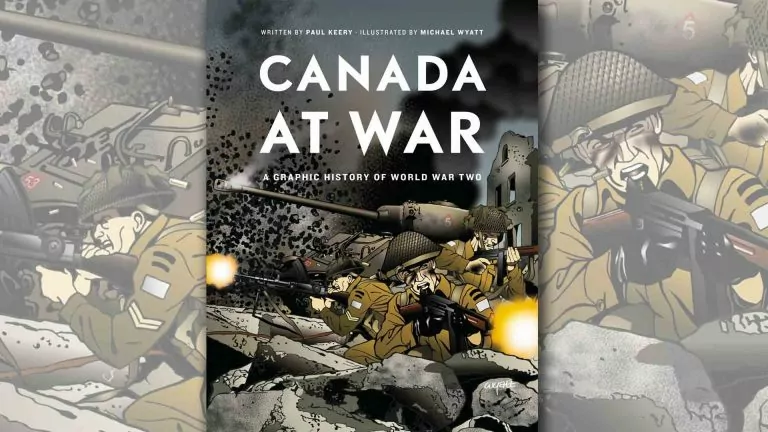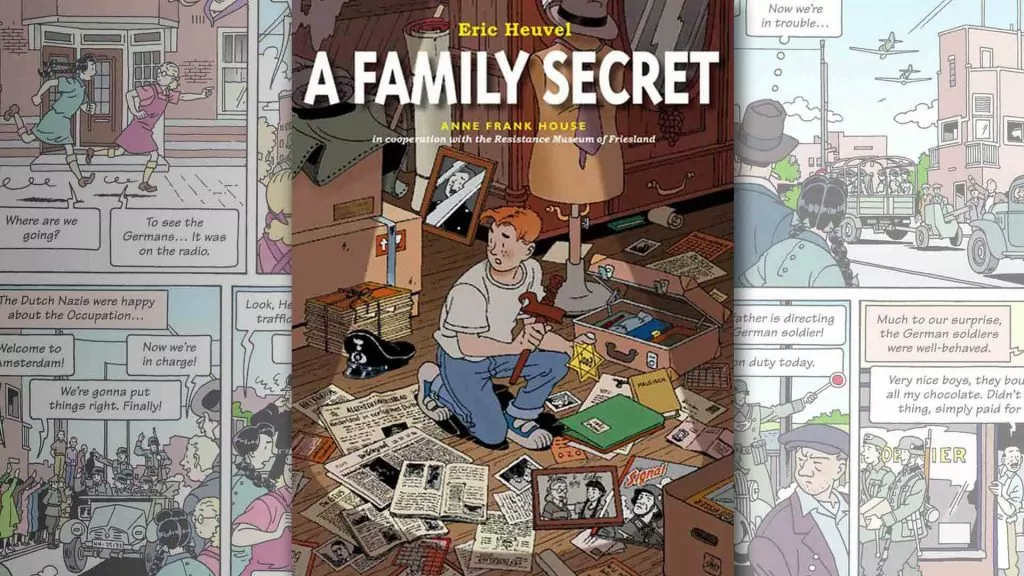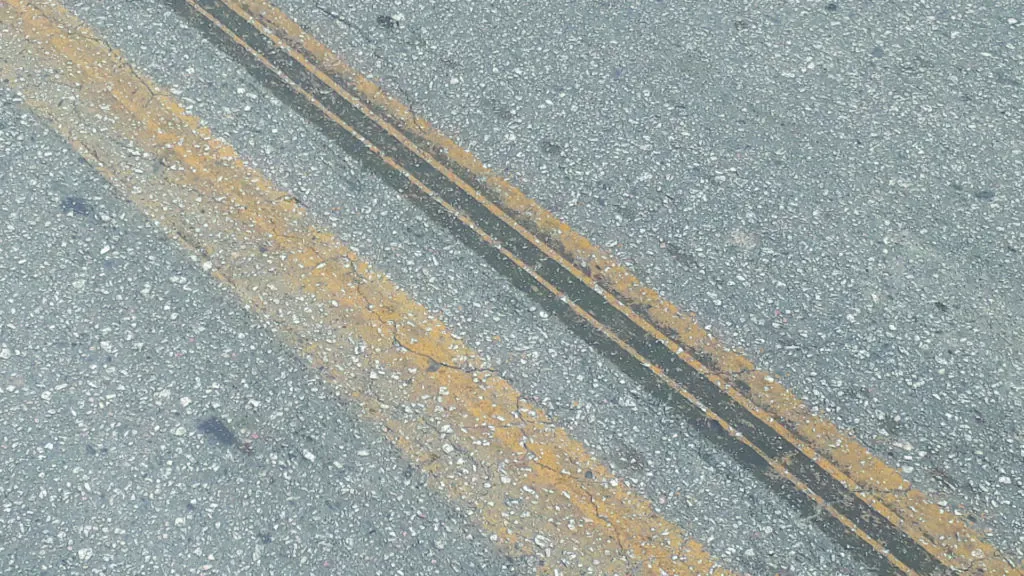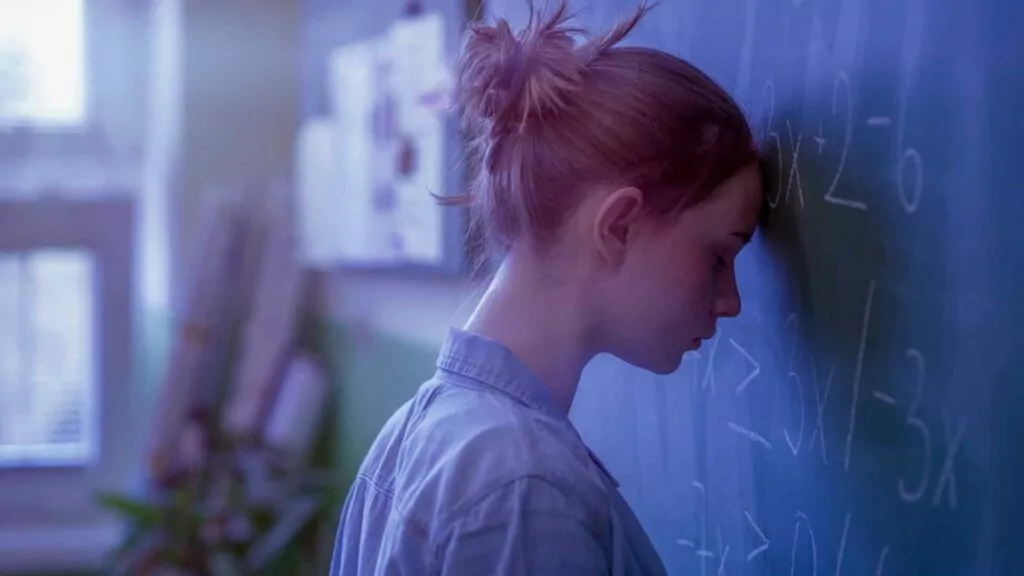by Paul Keery, illustrated by Michael Wyatt
176 pages, 2012
Halfway through Canada at War, I realized it was filling in an odd gap in my education. I had read about the Dutch experience of World War II in great kids’ books like Anne de Vries’ Journey through the Night and Piet Prins’ Scout series, and a love of classic war films like Casablanca and Twelve O’Clock High had given me a good sampling of the American perspective. But I don’t know if I’ve ever seen the war through Canadian eyes.
Canada at War is a “graphic history” – otherwise known as a comic – but it would be a mistake to dismiss this as fluffy kids’ stuff. It is weighty and well-researched and would be best understood as an illustrated history textbook. It includes chapters on: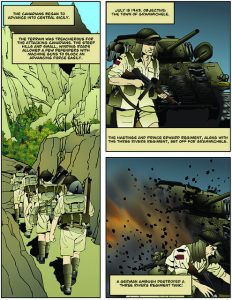
- Canada before the war
- Canada’s early defeats defending Hong Kong from the Japanese and attacking German-held Dieppe, France
- The creation and impact of Canada’s Air Force
- The Canadian Navy’s seemingly impossible task of protecting the Atlantic supply chain from U-boat attacks
- The costly lessons our Army learned in Sicily and Italy
- The joint invasion of Europe
- The Canadian role in the liberation of the Netherlands and the final defeat of Germany
Author Paul Keery, and illustrator Michael Wyatt do a masterful job of explaining, in just 176 pages, how Canada went from having next to no military to, in the space of just five years, becoming the third most powerful fighting force in the world. And they give readers a good understanding of just how much we owe the 1 million men who served.
Cumulatively the pictures are worth many thousands of words. Descriptions can’t quite convey the information available in a picture of a sailor waste deep in water on a leaky Corvette assigned to protect otherwise defenseless supply ships on their way to Britain. There is also a lot packed into a single frame, when we see a bomber pilot relaxing at his home base, happy to have survived another bombing run, but knowing that he has only a 1 in 4 chance of living through to the end of his tour.
The style of the visuals is also striking: it’s a mix of quite realistic computer animation and solid simple lines. Illustrator Michael Wyatt shows us action and lots of it, including planes being blown apart and submarines being sunk. However, Wyatt uses great restraint, showing the results of war – the blood, death, and destruction – without dwelling on the gory detail. This bloody detail is most often muted, either by being obscured (oftentimes by making use of silhouette images) or by being skipped right over. For example, in one exchange we see a soldier with blood on his face, but only learn how it happened from the caption.
But as should be expected in a “graphic history” of World War II, there are a few “graphic” frames. That said, Canada at War is intended for a young adult readership, and these pictures are unlikely to shock them. I’ve included a few of these frames immediately below this review so that parents can evaluate the visuals for themselves.
This is an impactful book that will give this generation a far better understanding of what their grandparents and great-grandparents endured to give them the Canada they see today.
